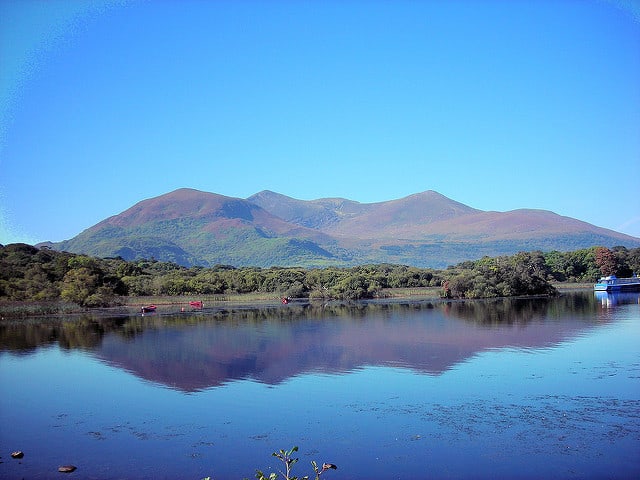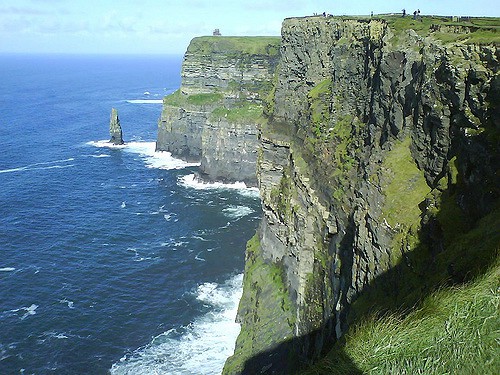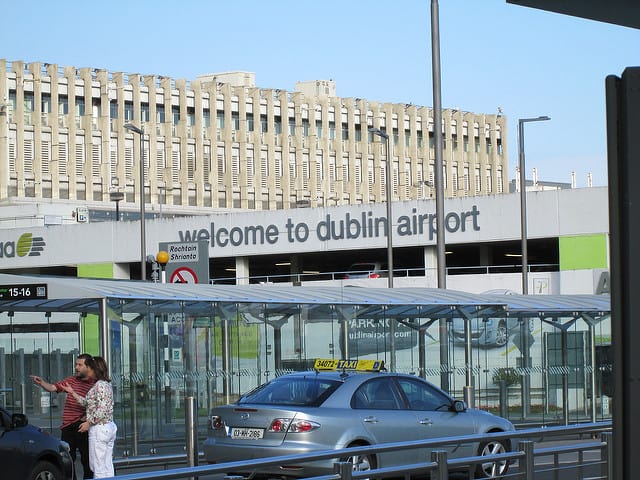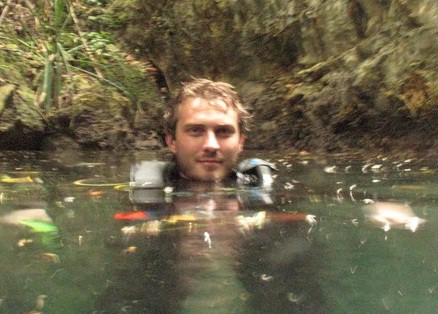
If you have been to Ireland before, please share your experiences, ideas and feedback (Hotel, Excursions, General Feeling,…) in the comments section below, by doing so you will help fellow travellers to plan their next trip


There are many folktales about the Irish, and they are known all over the globe! Indeed, even those that have no Irish blood in them can relate to the Irish culture. That may be why, to many people, a visit to Ireland is a lifelong dream. Dublin may be the most relaxed capital in the world and travelers from everywhere are enjoying it each year. Let’s find out more about this beautiful country.
In this page you will find practical information to plan a scuba diving trip to Ireland:
Table of contents
Where to stay?
Ireland is a small country, yet there’s a number of different destinations within that you can choose from. Indeed, each is unique, and worth a few days!
- Dublin: The capital and all around fun place. It has a laid-back small town feel for it with a great historical center and pub style nightlife.
- Killarney: Perfect for nature lovers. The Killarney National Park is the main attraction here.
- Galway: West Ireland’s largest city and considered the main center for traditional music and art.
- Limerick: Cannot choose between the first three choices? Limerick gives you an experience that has elements of them all.
Besides regions that you should visit, there’s plenty of choice in term of accommodation as well. Indeed, where you will stay in Ireland depends solely on your interests and budget, cause the options are there and many.
First, Ireland has a whole range of hotels, hostels, and bed&breakfast. These accommodations are available in most parts of the country and will be perfect for all kind of travelers. Secondly, there’s always the option of self-catering accommodations such as Airbnb and other platforms like this. Again, this will be available in most areas, in or around cities.

Lough Leane, Killarney National Park, Kerry, Ireland by Jim Linwood
Finally, the adventurous travelers might want to try camping or even glamping! Never heard of glamping? DiscoverIreland.ie describes it as “the perfect passageway to discovering nature and is a way to experience the great outdoors without sacrificing luxury.” In fact, the traveler can choose from a whole range of accommodation, offered at various prices. Teepees, pods, treehouses, luxurious yurt, and caravan are all part of a possible glamping experience! The main thing is that you still enjoy nature and the life outside the cities.
Activities and excursions in Ireland
Size-wise, Ireland is a small country. In fact, you can drive anywhere in the country in half a day. Still, it offers many different looks. Here are a few places you should see:
- Dublin is a capital city with a small town feel that still offers plenty to see and do! To only name a few, the Dublin Castle is a must-see destination, so is the Guinness storehouse! Indeed, even if you are not an ale drinker, take the 119.5 seconds that it takes and pour yourself a perfect pint. The Guinness Storehouse was voted the most popular tourist attraction in Europe for 2015!
- Cliffs of Moher – County Clare: Also called Cliffs of the Ruin is an eight-kilometer/ five mile stretch of cliffs overlooking the ocean. Plus, the cliffs are considered as one of the most picturesque views in Ireland.

Cliffs of Moher by Martin Sillaots
- Cork is Ireland’s second largest city. It offers the visitor many options. Kissing the Blarney Stone is said to give you the gift of the gab. While there, a visit to Blarney Castle is a must. So is a visit to the Church of St. Anne and ring the bells of Shandon.
- Irish National Heritage Park – County Wexford: The museum proposes 9000 years of history in a natural, unconventional set up. Indeed, the traveler will discover Ireland’s rich past through re-created depiction which takes place in the forest and woodlands.
Best time to visit Ireland
Ireland has a mild, temperate climate, you can visit at any time of year. There is no rainy season as the rain is spread throughout the year fairly equality. The average temperature is a mild 50°F/10°C. Winters days average 43°F/6°C and summer reach an average of 64°F/18°C. The peak tourism season is the summer months.
Health and Safety
Healthcare in Ireland is considered excellent. Indeed, you will easily find a public hospital. Plus, most will provide accident and emergency services. In case of an emergency, locals and visitors along will be treated immediately, the payments and insurance matter will be dealt with afterward.
People attending the Accident and Emergency Department of a public hospital are prioritised on the basis of medical need. You may be required to wait for treatment if you have a non-urgent injury or illness. Also, some private hospitals and clinics offer emergency services, but be aware that you will be charged the full cost of care in private facilities.
Moreover, some countries have agreements with Ireland stating that their citizens can receive free public health care while traveling in the country. For example, nationals from the European Union and the European Economic Area countries are covered under the public health system. Also, citizens from other countries may have agreements; Australia is a good example. A few other exceptions are found, please visit the Irish Government website in order to determine which is your situation regarding healthcare in Ireland.
Safety-wise, most travel advisories published by other governments suggest that you take normal precautions. Violent crime rates are low but do exist. Terror threat level is rated as low.
If you are planning an upcoming dive trip or travelling to Ireland, it is a really good idea to invest in travel insurance for scuba diving, because you never know what could happen and when you might need it (because accidents do happen!). I recommend this diving insurance as they offer worldwide coverage and focus on providing scuba divers a quality insurance and medical assistance service.
Where is Ireland located in the world?
Ireland is an island in the North Atlantic. It is separated from Great Britain to its east by the North Channel, the Irish Sea, and St George’s Channel. In fact, Ireland is the second largest island of the British Isles, the third-largest in Europe, and the twentieth-largest on Earth.
The Republic of Ireland occupies most of the island of Ireland as the other part belongs to Northern Ireland. The former is a country and a member of the European Union, while the latter is a portion of the United Kingdom.
How to get to Ireland?
The country of Ireland has 3 international airports which are Dublin airport, Cork airport, and Shannon airport. Of these, Dublin has the most long-haul flights.
Also, note that the Belfast International Airport and George Best Belfast City Airport are located in Northern Ireland and can also be used to reach the country.
Furthermore, there are another 7 domestic airports in Ireland, but given the small size of the nation, there is not much traffic between these. In fact, their flights are mostly to portions of the U.K.
The Dublin Airport is the sixth largest airport in Europe for transatlantic flights. During the summer, 10 airlines are operating a total of 446 flights per week to and from Dublin Airport to 20 North American destinations. Indeed, this equates to an average of 64 transatlantic flights daily! Overall, there are 56 airlines leaving from Ireland that connect to 195 destinations in 42 countries.

Dublin Airport by Nate Eagleson
Do I need a visa for Ireland?
Ireland is a member of the European Union but is not a member of the Schengen Agreement. Indeed, this means that EU/EEA and Swiss citizens are allowed free movement entering Ireland. Also, while not a member of the Schengen agreement, it does have similar policies. They do allow a number of nationals of different countries to enter without a visa for up to 90 days. There are some variations so it best to verify your visa needs before traveling.
Please note: Crossing between Ireland and Northern Ireland has no border control points. However, it is considered an entry/exit for those needing a visa. To visit Northern Ireland you will need a UK visa.
Getting Around
Getting around the cities is fairly simple as they have local rail and bus systems. Rental cars and taxis are also available.
As to travel between different cities, travel times around Ireland are short so it’s best to travel by land. There are only two air routes within the country that might be worth considering, the Dublin-Kerry, and Dublin-Donegal. Each has only a few flights each day and the flight times are about an hour. Driving time from Dublin is about 3 hours to either location and count 30-60 minutes more to travel by express bus.
Ireland is a place you must have on your bucket list. It is an ancient land that has a history that only a few nations can rival.
Ireland Photos
Scuba diving
You will find all information about sea life, best time to visit, top dive spots, etc. in our review: Ireland Diving

 Destinations
Destinations









Your Travel Feedbacks
No Travel Feedback yet on this page, your thoughts are welcome!
Have you been travelling or scuba diving here? Rate it!(3 votes, 4.33/5)